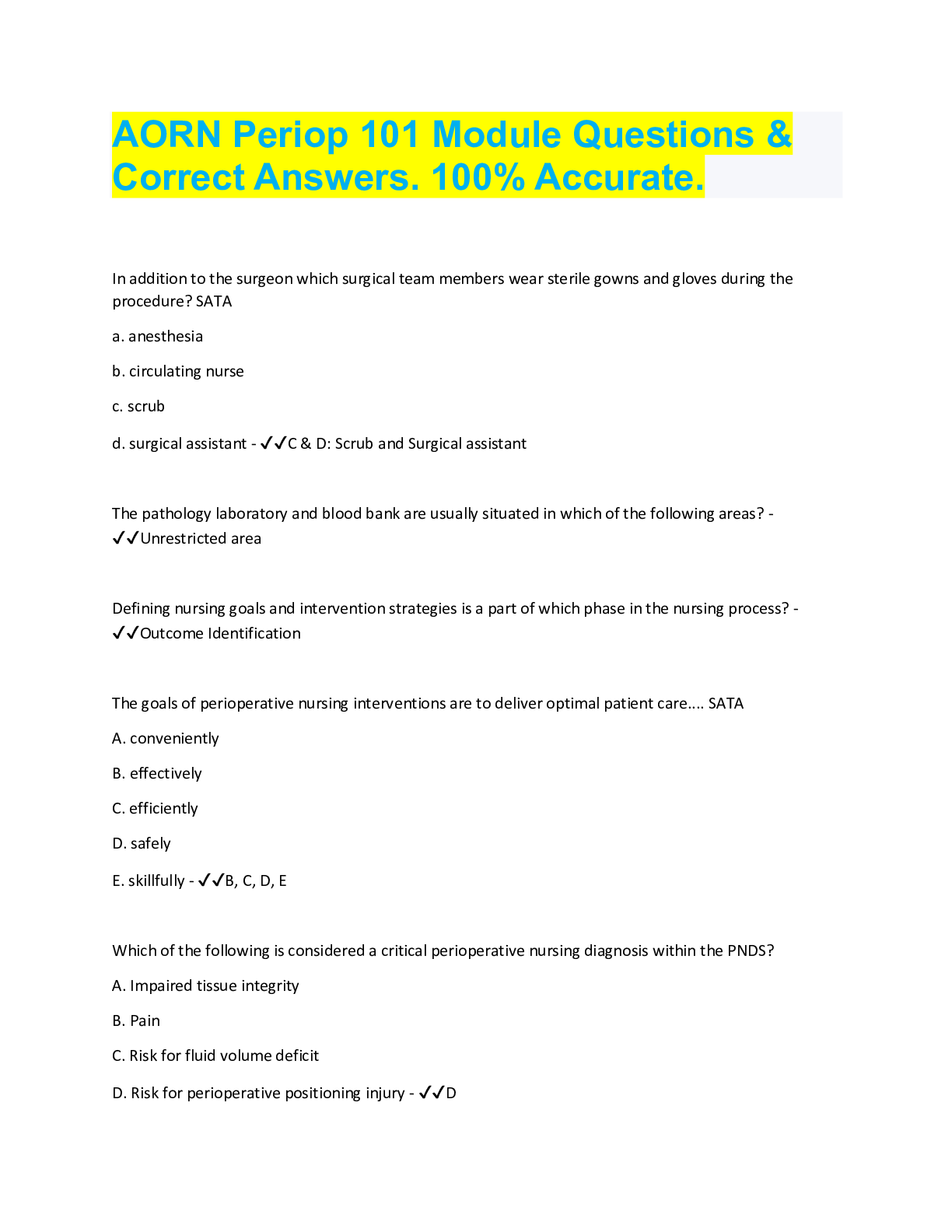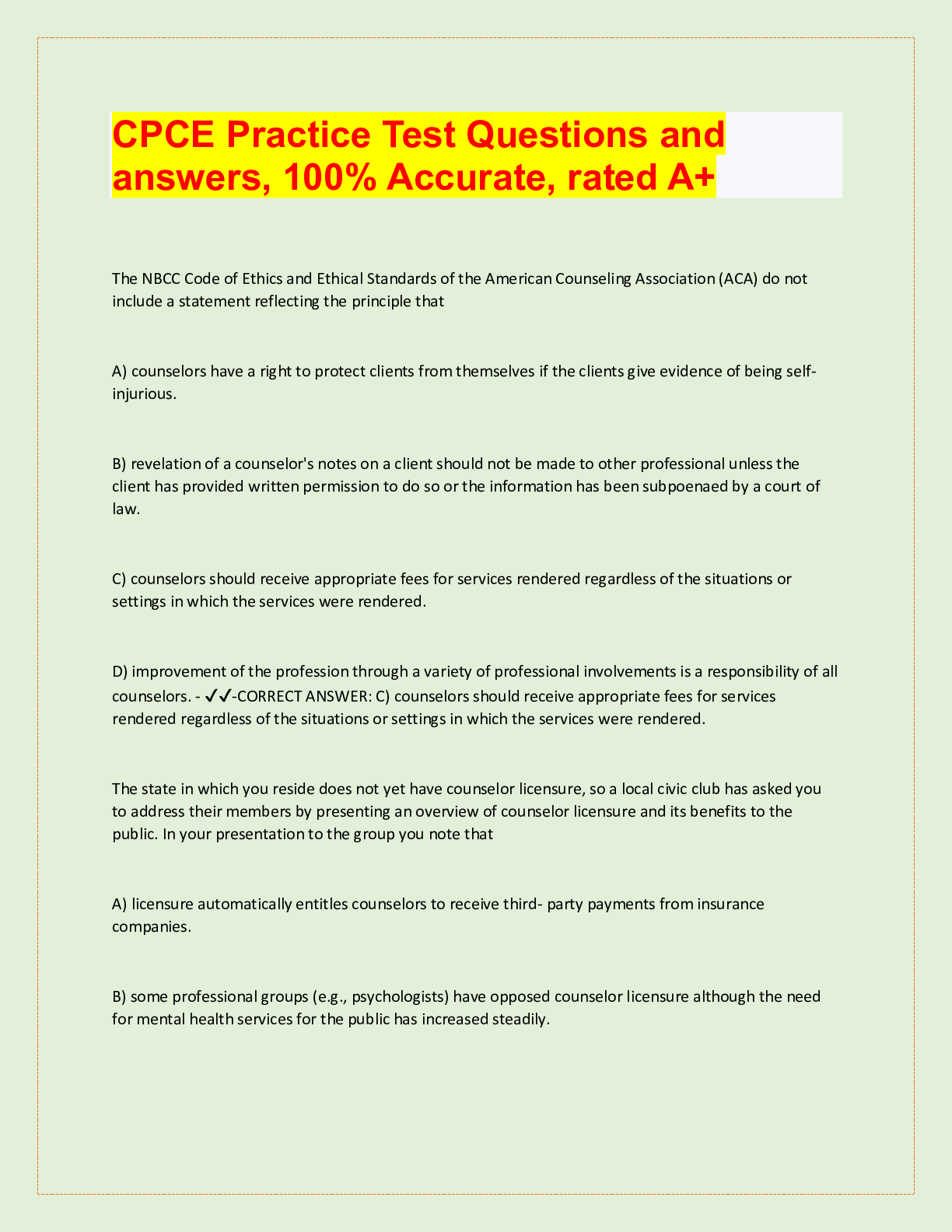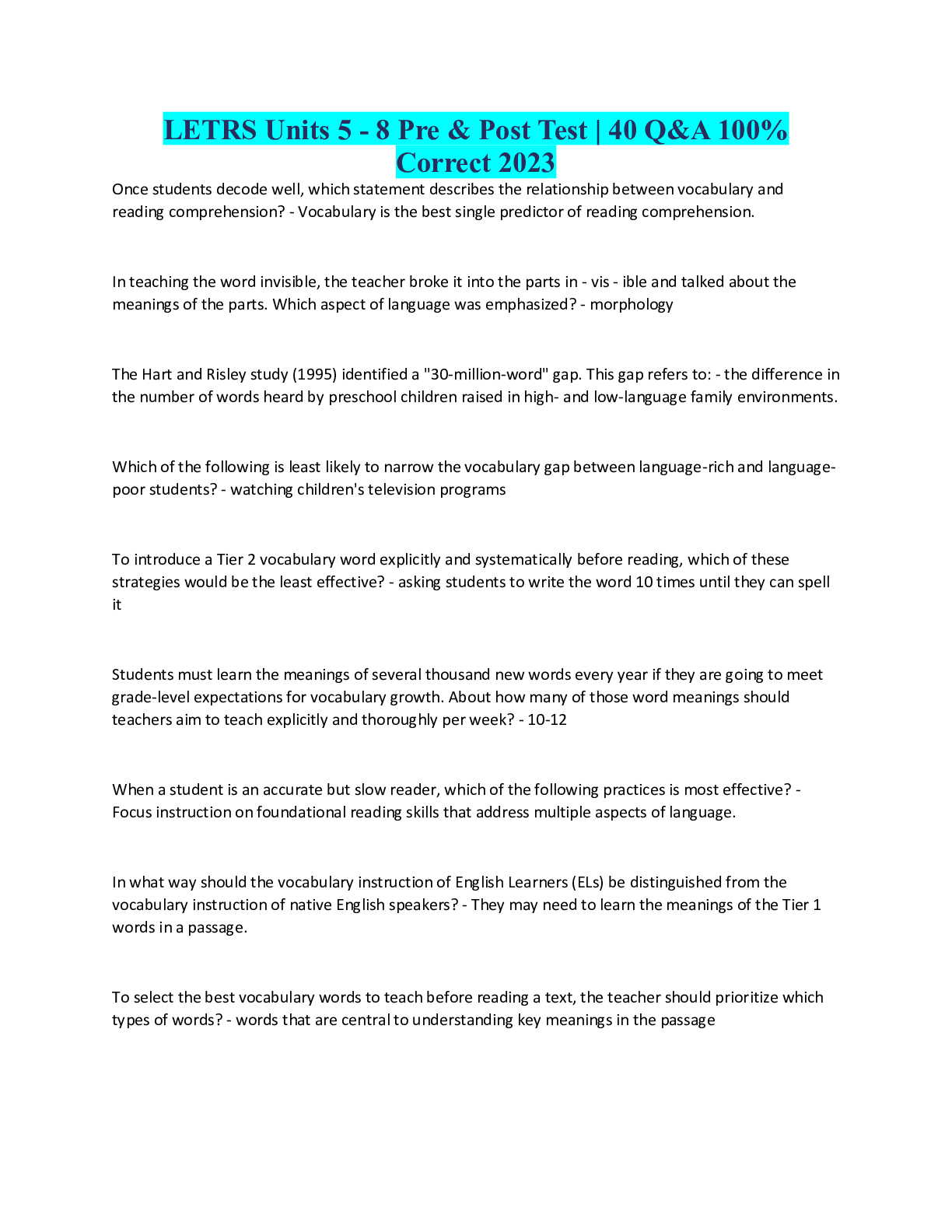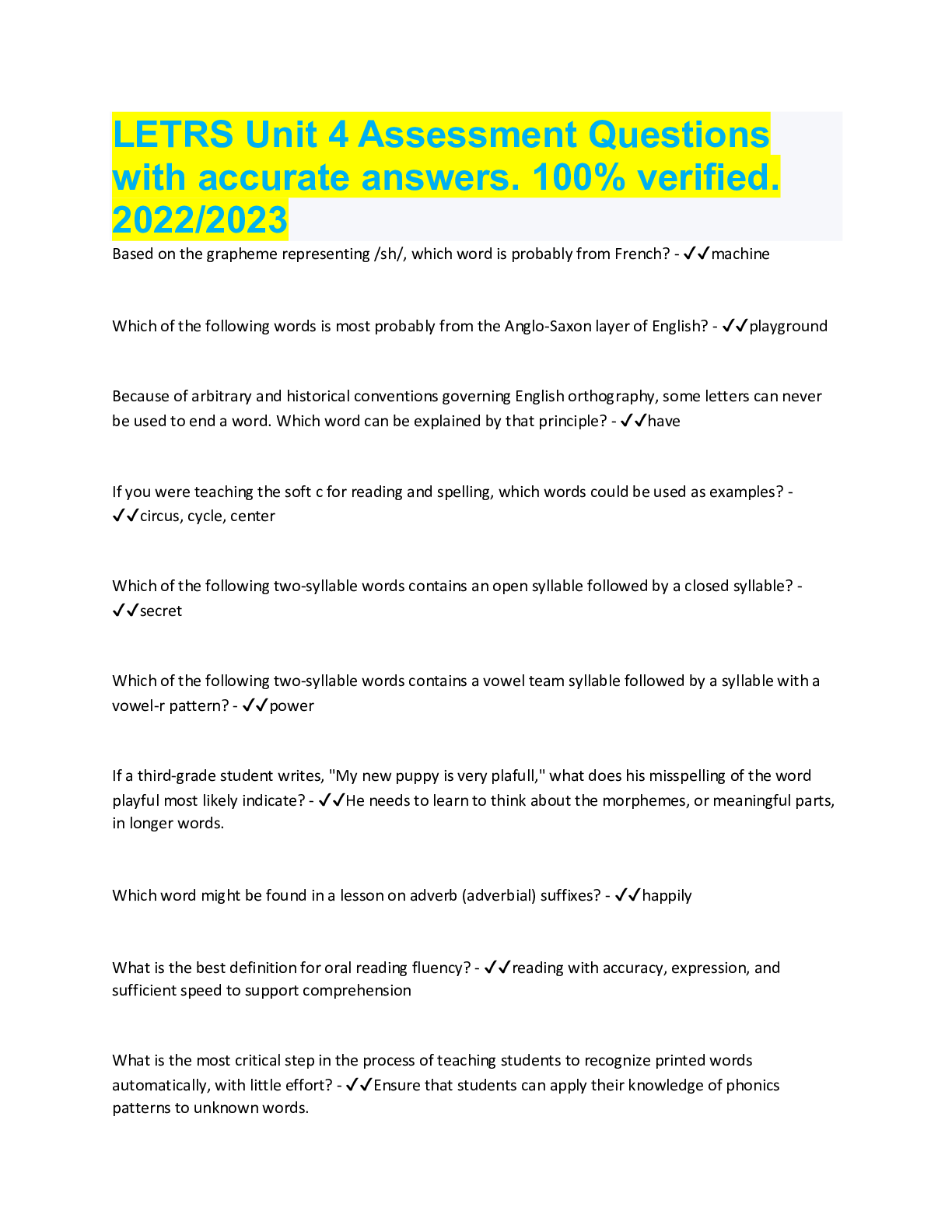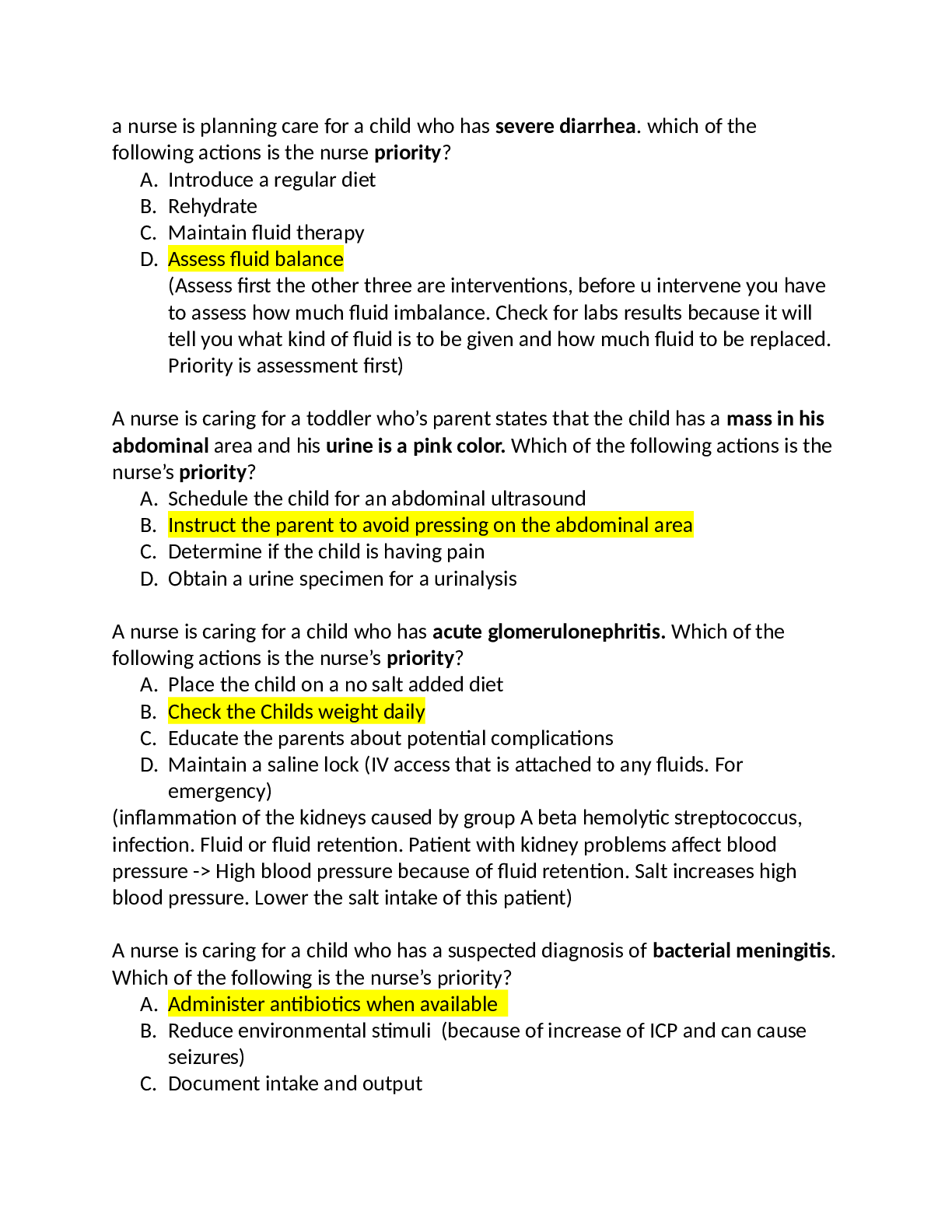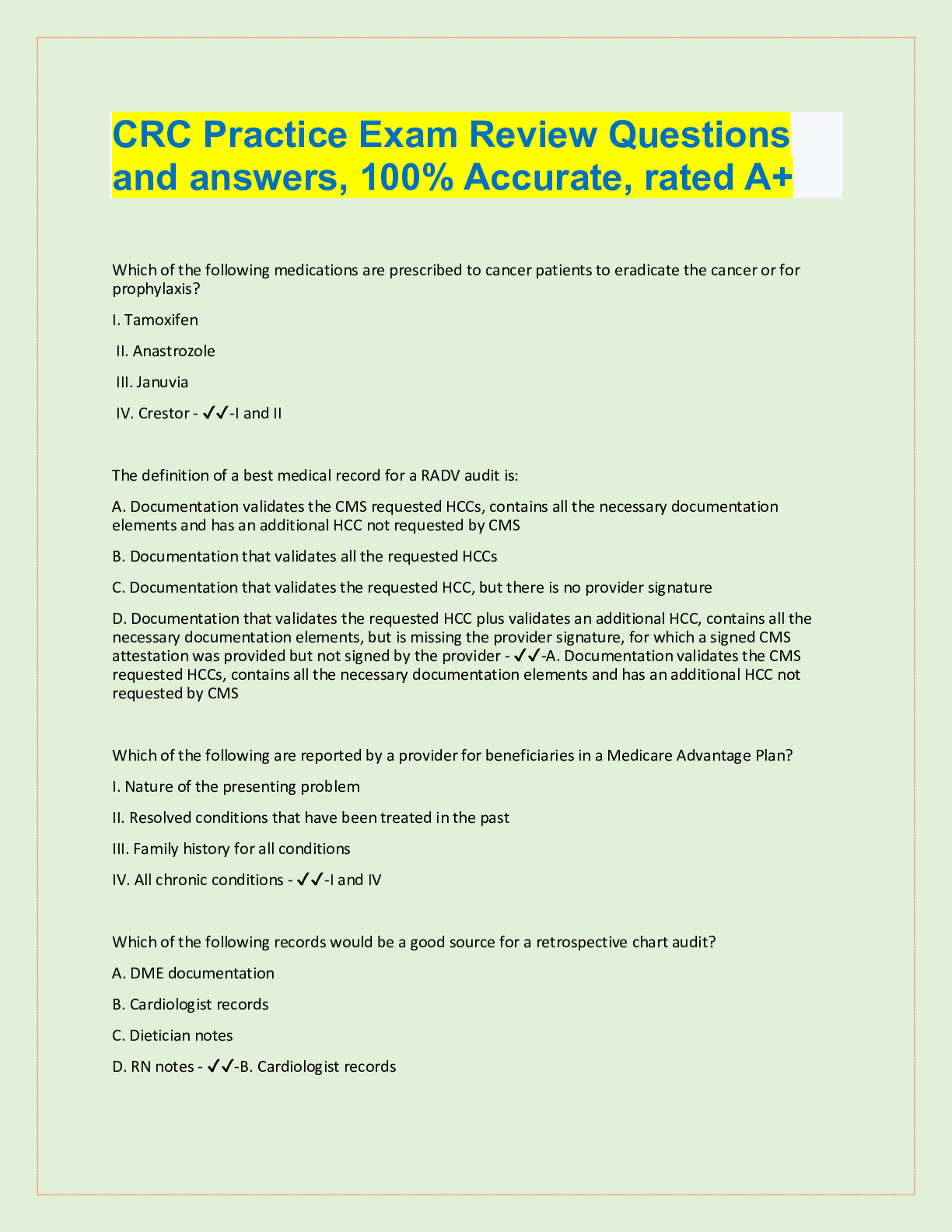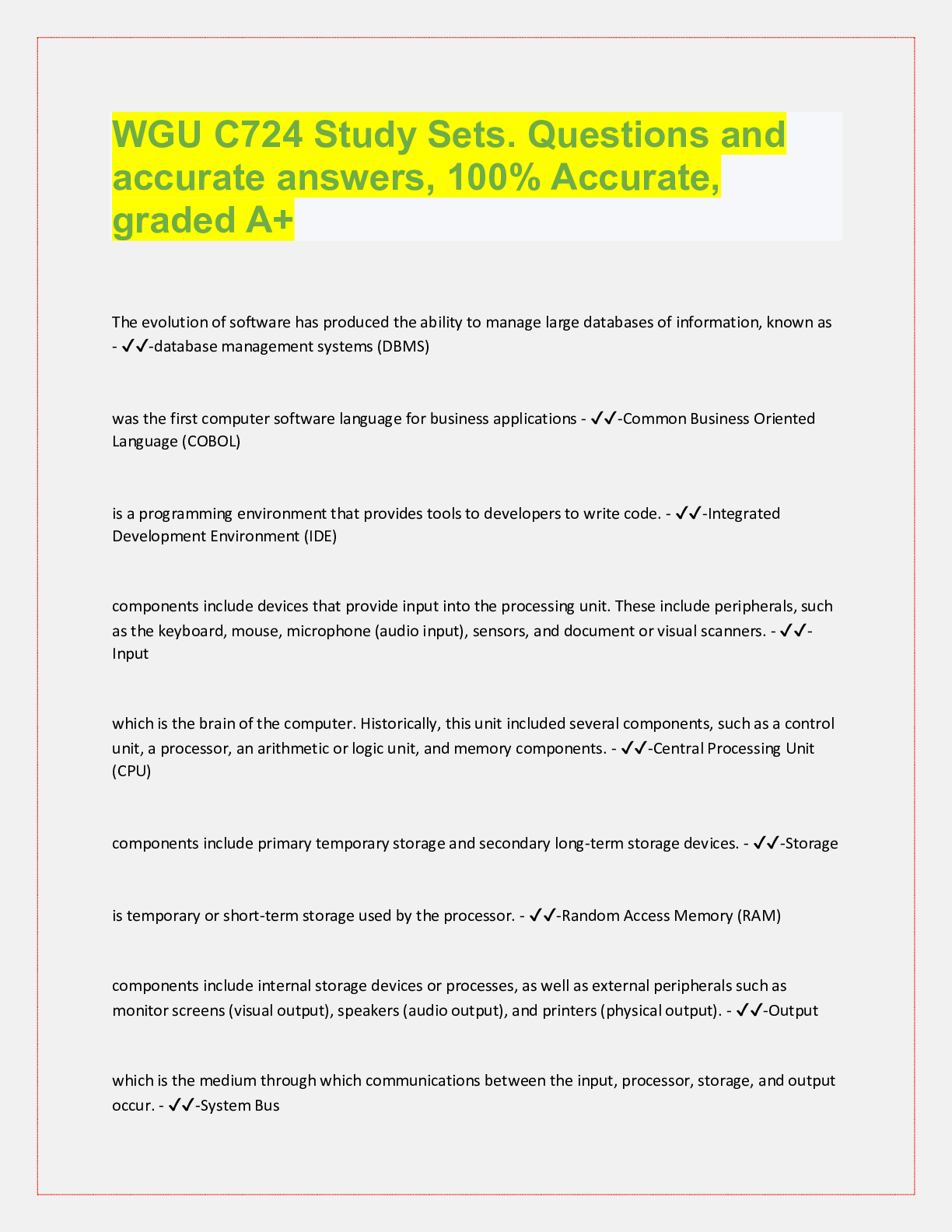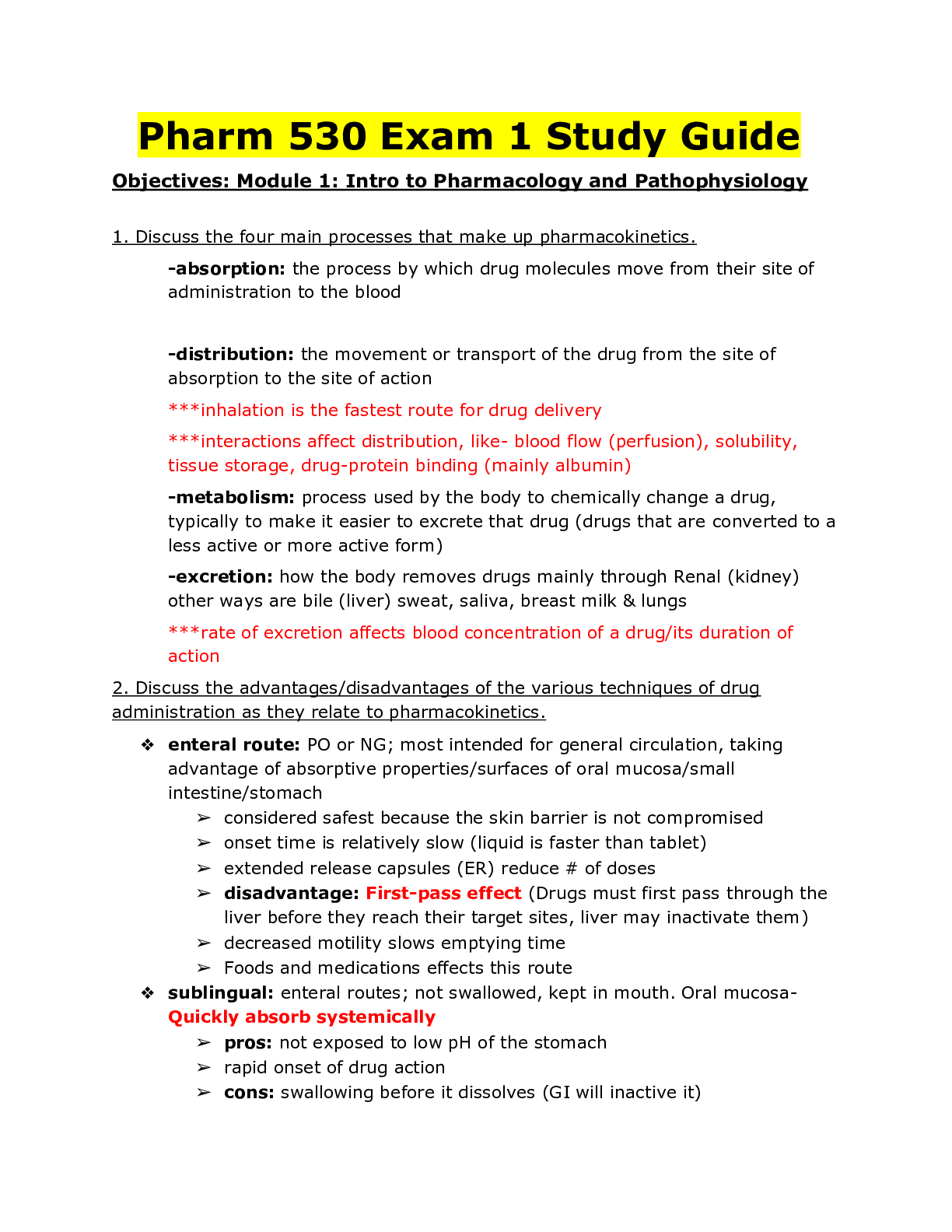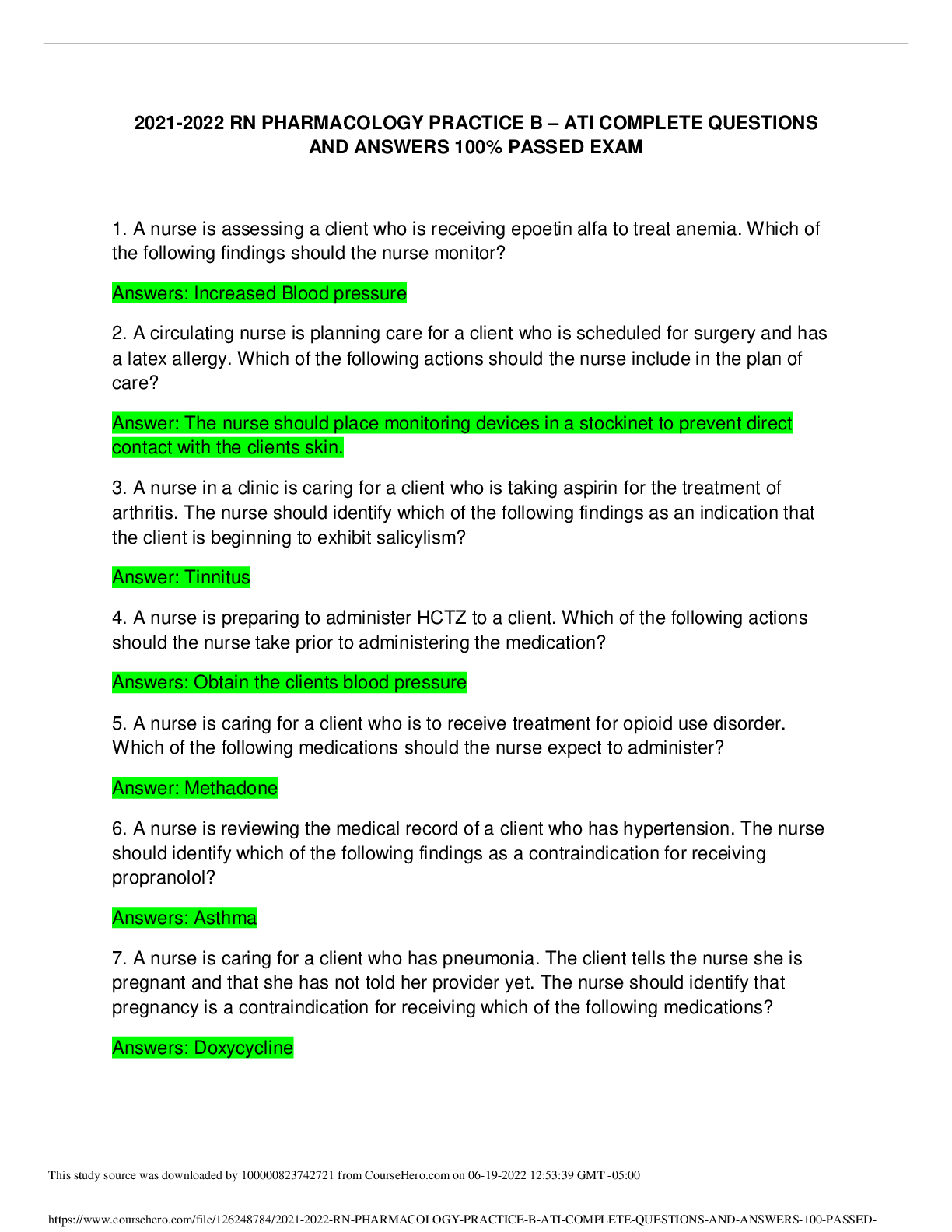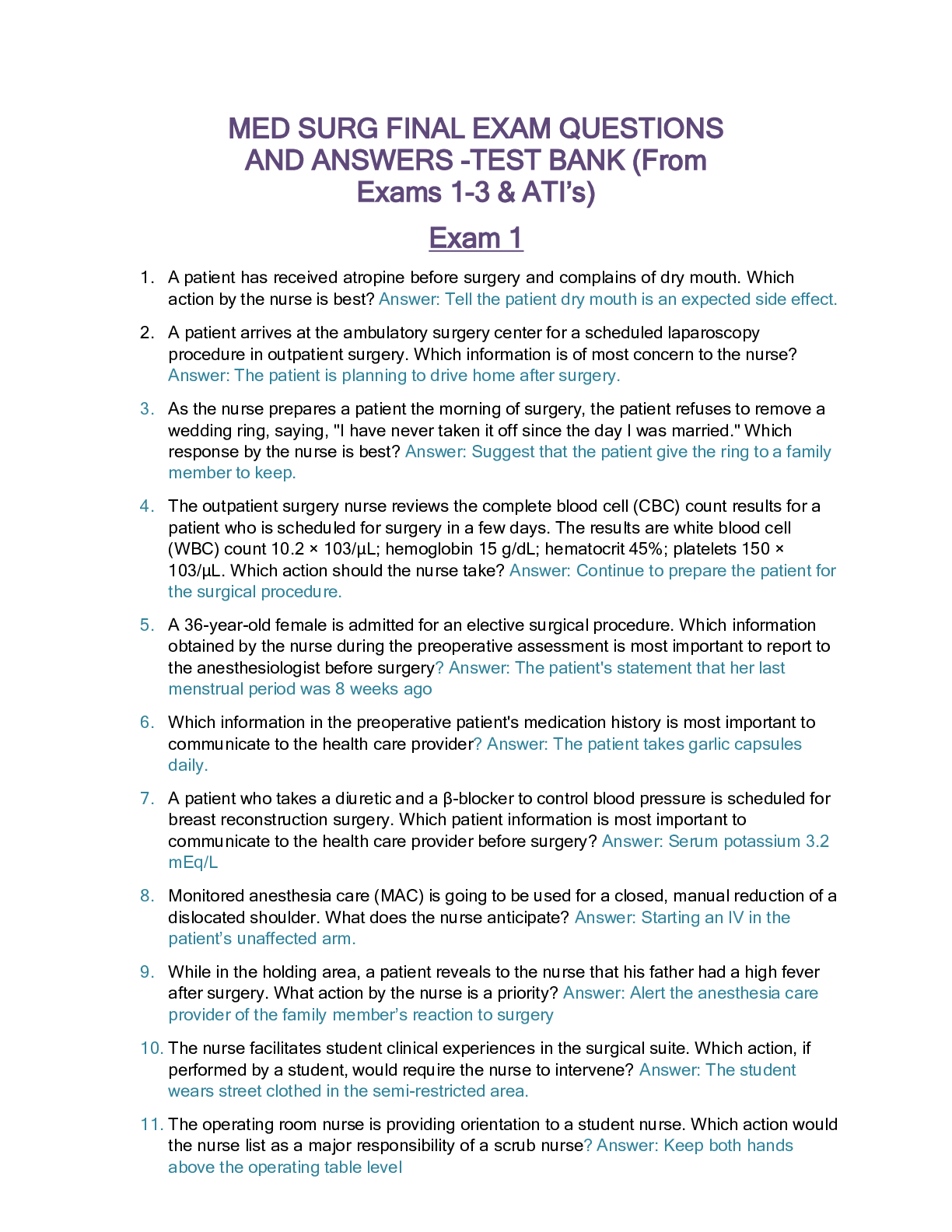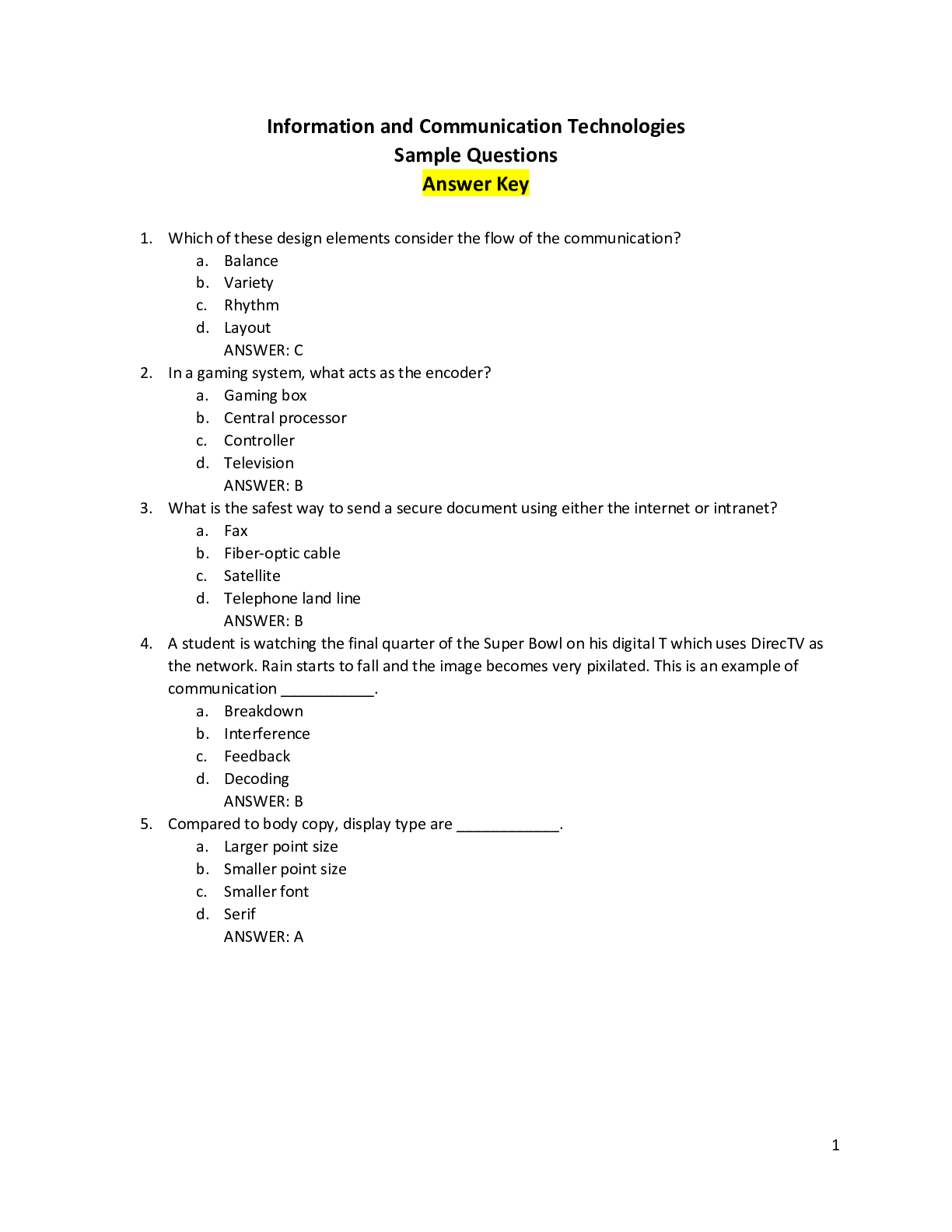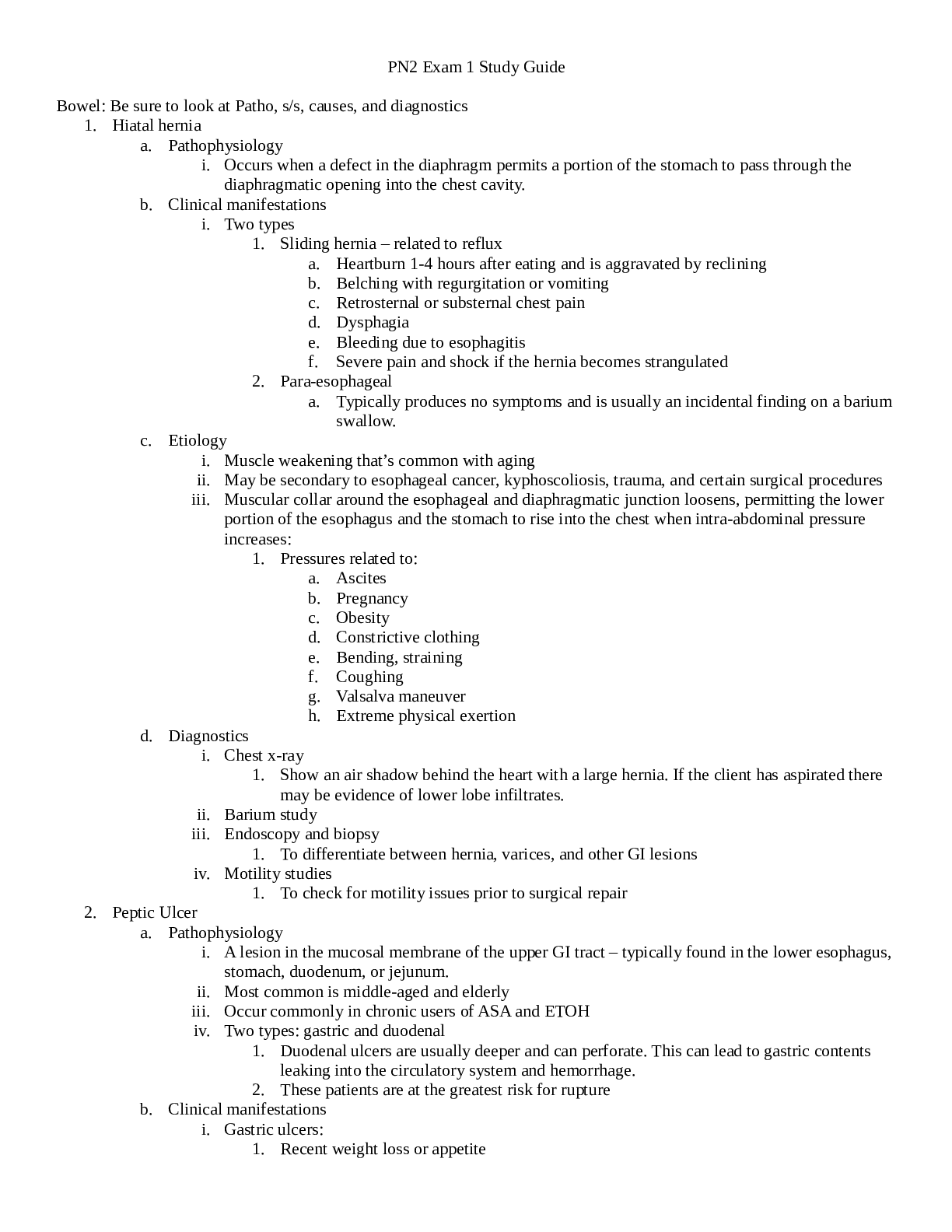Emergency Medicine > QUESTIONS & ANSWERS > EMT Exam 1 Study Guide. Questions and answers, 100% Accurate, rated A+ (All)
EMT Exam 1 Study Guide. Questions and answers, 100% Accurate, rated A+
Document Content and Description Below
EMT Exam 1 Study Guide. Questions and answers, 100% Accurate, rated A+ What are the 4 national levels of EMT Provider? - ✔✔-Emergency Medical Responder (EMR) Emergency Medical Technician (EMT)... Advanced EMT (AEMT) Paramedic Who is responsible for the care delivered in the EMS system? - ✔✔-The Department of Transportation DCAP-BTLS - ✔✔-Deformities Contusions Abrasions Punctures/Penetrasions Burns Tenderness Lacerations Swelling AVPU - ✔✔-Alert Verbal Pain Unresponsive SAMPLE(R) - ✔✔-Signs/Symptoms Allergies Medications (Rx,OTC,Street) Pertinent Medical History Last Oral Intake Events (leading up to) (R)isk factos (what could contribute to problems) OPQRST-ASPN - ✔✔-Onset (Rapid/Gradual) Provocation/Palliation (what makes it better/worse) Quality (describe pain) Radiation (how far does the pain travel) Severity (0-10/1-10) Time (when did it start) Associated Symptoms (things that occur along with the presented problems) Pertinent Negatives (important symptoms that they are not experiencing) What are the parts of the scene size up? - ✔✔-Scene Safety (most important, leave if you can't make it safe) BSI/PPE Number of Patients MOI/NOI Additional Resources C-spine coinsideration What are the parts of the primary assessment? - ✔✔-General Impression C-spine decision LOC (AVPU) ABC's Initial Transport Decision What is the purpose of the primary assessment? - ✔✔-To detect and treat immediately life-threatening problems What is the reassessment process? How often should it be done? - ✔✔-Repeat primary assessment Reestablish priority Reassess vitals Repeat focused assessment (regarding patients injuries or complaints) Check interventions (oxygen, ventilation, bandages, etc) Done every 5 mins for critical patient Done every 15 mins for stable patient What is the detailed assessment? When should it be completed - ✔✔-Done AFTER critical interventions Similar to RAPID Trauma DCAPBTLS Assessment What are the rules of suctioning? - ✔✔-10 seconds max Suction on the way out Only go as far as you can see What are the two methods of opening an airway? Why would you choose one over the other? - ✔✔- Head tilt, chin lift (non trauma or spine) Jaw thrust (trauma or spine) What are the two types of airway adjuncts? - ✔✔-Oropharyngeal Airway (OPA) Nasopharyngeal Airway (NPA) use to open the airway, don't use OPA on patient with gag reflex What are the signs of hypoxia? How would you fix it? - ✔✔-Cyanosis, labored breathing, low pulse ox, bad LOC Treat by administering oxygen What are the vital signs and normal ranges? - ✔✔-BP: 120 [Show More]
Last updated: 1 year ago
Preview 1 out of 12 pages

Reviews( 0 )
Document information
Connected school, study & course
About the document
Uploaded On
Mar 15, 2023
Number of pages
12
Written in
Additional information
This document has been written for:
Uploaded
Mar 15, 2023
Downloads
0
Views
66






